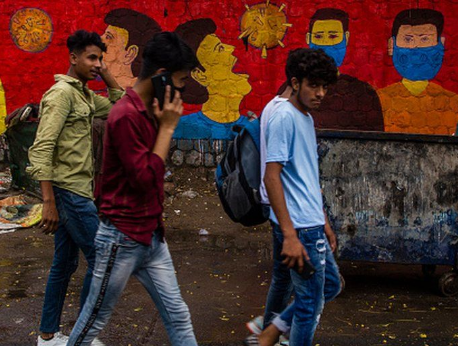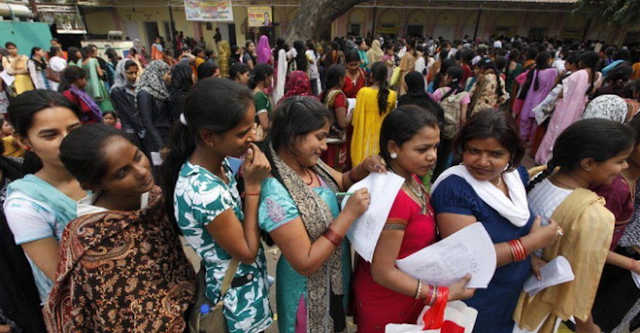Budget 2022: The growing employment crisis in India is leading the younger generation towards huge unemployment.
Finance Minister Nirmala Sitharaman announced the budget this week, according to which the government will create 8 lakh jobs in the next five years (the target was 2 crore jobs per year before the formation of the government). But in the present circumstances where India’s economy is visible, even this goal seems impossible. The rising unemployment rate has exceeded that of most emerging economies in recent years.
 |
| Job prospects for the young look bleak in India- IMAGE CREDIT-BBC |
Craig Jeffrey and Jane Dyson, who have studied the unemployment rate in depth in India, have written extensively on the unemployment situation in India. (BBC News)
They both mention that in the mid-2000s, a group of students at a college in Meerut (Uttar Pradesh) jokingly called themselves the “nowhere generation”.
Distraught over not getting a government job even after years of hard work, this student group of youths said that they are getting caught between their rural surroundings and urban glare. It seems that “unemployment” (unemployment) has made them high and dry, depriving them of modernity.
“Well, our life has just become timeless,” he said.
Over the past two weeks, the unemployment situation has become more pronounced, once again drawing the attention of the media (except Godi Media) mainly to this and the phenomenon of “unemployed youth”.
you may read also
Nehru family and Biography
Administrative Reforms of Lord Cornwallis
Governor General Lord Lytton’s Home and Foreign Policy
Death or murder of Lal Bahadur Shastri in Tashkent
India’s unemployment crisis is more dire than anticipated.
Millions of highly educated poor youth are claiming to boost India’s rise (as claimed by the government) and projected Asia to benefit from the “demographic dividend”.
The problem of unemployment in India, as was evident in the mid-2000s, has grown progressively since then. But the youth of this country are more concerned about the future of the government than their own.
As soon as questions are asked on unemployment in the country, the leaders of the present government hypnotize the youth with their loud speeches and forget unemployment and bring them to Hindu-Muslim.
But if we look carefully and put aside stereotypes about unemployed youth as a threat to society, we can ask: What are the youth in India really doing on a daily basis? How do they spend their time? How do they relate to their communities? How are they changing India?
Over the past 25 years, we have researched the experiences and work of unemployed youth in the age group of 18 to 35 years in the states of Uttar Pradesh and Uttarakhand. The research involved youths living and working with unemployed youth for many years in Meerut (Uttar Pradesh) and Chamoli districts of Uttarakhand.
 |
| Women wait to get their names registered at a government jobs office in Uttar Pradesh IMAGE CREDIT-BBC |
The depth of social suffering is visible. Unemployment has pushed the youth into despair. Due to lack of money and employment they cannot meet the needs of the family, they are not seen with respect and even marriage is not taking place.
For men, the lack of a “pucca job” (permanent job) deprives them of their identity as earners. At the same time, they sink into despair thinking about the time lost for education and jobs.
Work is also related to citizenship. Many youths spend their teens and early twenties dreaming of serving the nation through getting a job in government service, which has become extremely difficult to secure.
No wonder so many unemployed youth, especially men, have become cynical and isolated, finding themselves “doing nothing” or merely busy passing the time. There is no generation everywhere, it seems.
But such self-preservation of the unemployed and under-employed “doing nothing” – or being “nowhere” should not be taken at face value.
Young people are often closely involved in forms of entrepreneurship on a daily basis. They find “fallback” work, not necessarily high quality or utilizing all of their skills, but it is enough to give some sense that there may be better employment in the future.
Also notable is the extent to which community service is performed by unemployed and under-employed young people. This section of the society has become the mainstay of the civil society of India.
At the most mundane level, these youth often act as facilitators of social change, volunteers and others in their village or city neighbourhoods. They help people to access state services. They spread new ideas, for example in relation to technology, microcredit, religious practice, environmental care and development.
Sometimes these youth protest, but often the mobilization is around services and infrastructure rather than politics. They want a better math teacher or an extension of their school.
One thing that many unemployed youth have told us is that even though they cannot help themselves, they may be able to help the generation that follows them.
Young youth – teens and pre-teens – are grappling with educational and career choices that are new and that their own parents struggle to understand. The middle-class generation, the unemployed or under-employed 18-35-year-olds, who have been through recent struggles to find work, become the key to the “middle back” (middle generation).
Painting this picture is neither meant to romanticize young people nor unemployment. But it is to acknowledge the energy center in the Indian population – unemployed youth who live in common places across India in their teens, twenties, or early thirties. They are important for the future trajectory of India and the world.
It is also a question for policy makers to be asked.
How can outside organizations better support this community of youth? Perhaps India’s massive Mahatma Gandhi National Rural Employment Guarantee Scheme could be expanded to include structured opportunities for young people to do the kind of community service they lead. Maybe efforts can be made to find ways to accredit active unemployed or under-employed youth with skills.
One thing is clear: the youth themselves are desperate for such opportunities.
this Artical crdit to-Craig Jeffrey and Jane Dyson ( BBC INDIA)
Craig Jeffrey and Jane Dyson teach human geography at the University of Melbourne. Jeffrey is the author of several books on India, including—
Timepass: Youth, Class, and
the Politics of Waiting in India.
Dyson is the author of—
Working Childhood: Youth, Agency and
the Environment in India.
read also